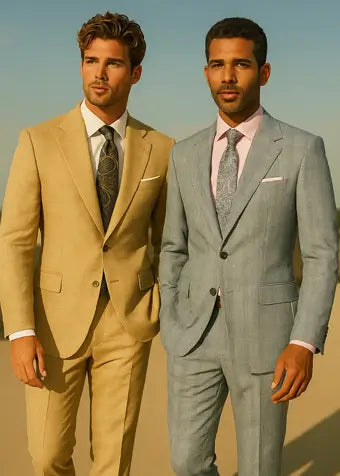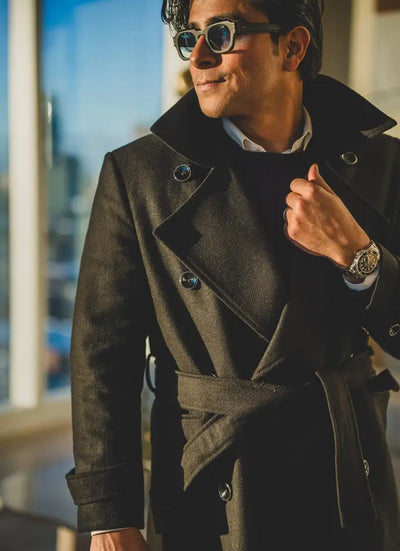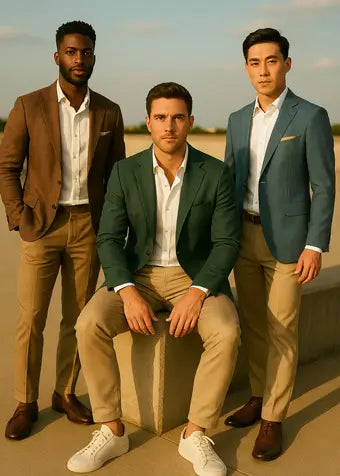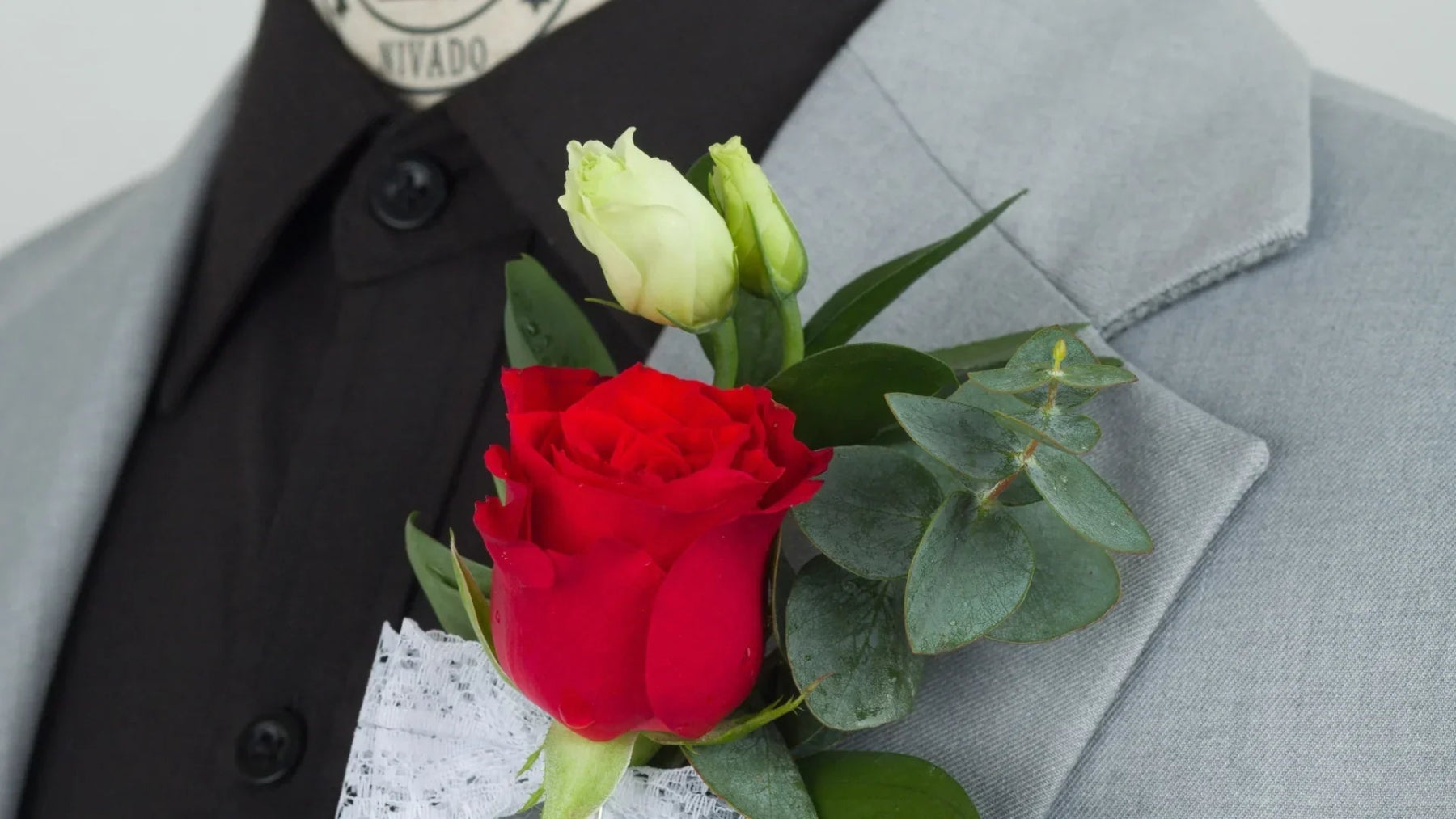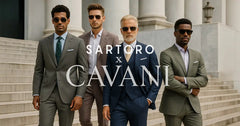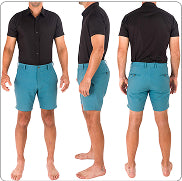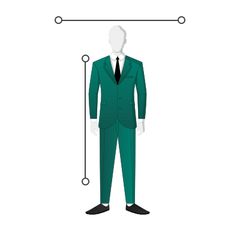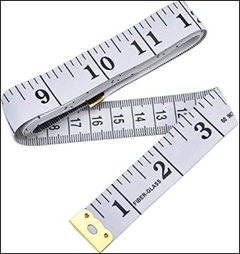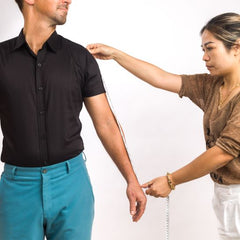
Mastering Formal Dress Codes: Beyond Black Tie
Contents
- Mastering Formal Dress Codes: Beyond Black Tie
- White Tie Vs Black Tie: Understanding The Key Differences
- When To Wear White Tie: The Most Formal Events
- When To Wear Black Tie: Elegant But Less Rigid Occasions
- The Anatomy Of A White Tie Look: What’s Required
- The Anatomy Of A Black Tie Look: Key Components
- Beyond Black Tie: Creative And Modern Dress Codes
- Common Mistakes Men Make With Formal Dress Codes
- Final Thoughts
- Frequently Asked Questions About Mastering Formal Dress Codes: Beyond Black Tie
Key Takeaways
- Know the Code: Differentiate between "white tie" (ultra-formal, tailcoat, white accessories) and "black tie" (formal, tuxedo, black accessories) to avoid common blunders.
- Fit is King: Regardless of the dress code, a well-tailored suit or tuxedo is paramount to achieving a sophisticated and polished appearance.
Mind the Details: Accessories, grooming, and avoiding mixed dress code elements are crucial for a cohesive and respectful formal ensemble.
Mastering Formal Dress Codes: Beyond Black Tie
Formalwear has rules, but that doesn’t mean your style has to feel rigid. From the precision of a white tie to the modern edge of a creative black tie, understanding dress codes is about knowing the boundaries so you can move with confidence inside them—or bend them when the moment calls for it.
This isn’t about dusting off something that feels out of touch. It’s about elevating your look for life’s big moments while still feeling like yourself. Whether stepping into a gala, a wedding, or a high-profile evening event, the right approach to formal dress codes takes the stress out of dressing up and lets your personal style lead.
At Sartoro, we build suits that bring clarity to those rules, sharp tailoring, thoughtful design, and room for expression. Because when you know what’s expected, you can choose how to stand out.
White Tie Vs Black Tie: Understanding The Key Differences
When the invitation arrives and the dress code reads “white tie” or “black tie,” deciphering the exact expectations is essential. While both codes project a sense of grandeur and sophistication, their differences are clear-cut, affecting everything from your suit selection to your accessories and demeanor. Below, we break down the distinctions to help you easily navigate these prestigious events.
The White Tie Standard
White tie is the most formal dress code in Western fashion, reserved for the most distinguished occasions—think royal galas, state dinners, and opera premieres. The ensemble is marked by a black tailcoat (not a tuxedo) worn over a white starched Marcella shirt, a stiff white bow tie, high-waisted black trousers, and a white waistcoat.
Accessories are strictly traditional: black patent leather shoes, formal studs and cufflinks, and sometimes white gloves and a top hat. The emphasis here is on immaculate presentation and strict adherence to tradition.
The Black Tie Code
Black tie is synonymous with elegant evening events such as formal weddings, balls, and award ceremonies. Central to this code is the classic tuxedo: a black or midnight blue dinner jacket (usually with satin lapels), paired with matching trousers, a white tuxedo shirt, and a black bow tie.
The look is finished with black patent leather shoes and subtle, refined accessories. Compared to white tie, the rules for black tie are slightly more relaxed, allowing for modest variations like different lapel styles or cummerbunds. In warmer climates or outdoor ceremonies, modern interpretations—such as mens linen suits for weddings—offer a breathable yet sophisticated alternative that still honors the formal spirit of the dress code.
Key Elements That Set Them Apart
- Jacket Style: White tie calls for a tailcoat, while black tie requires a dinner jacket.
- Bow Tie and Waistcoat: White for white tie, black for black tie.
- Formality: A white tie does not allow for personalization, while a black tie allows for subtle custom touches and modern interpretation.
- Occasion: White tie is rare and ultra-formal, black tie is more common but still reserved for special evenings.
When To Wear White Tie: The Most Formal Events
White tie is the pinnacle of formal dress codes, reserved for events that demand the highest refinement and sophistication. Distinct from even the most luxurious black tie affairs, white tie occasions have a specific set of traditions and expectations.
State Banquets
White ties are customary at state banquets and official diplomatic receptions, events attended by international dignitaries, royalty, or heads of state. The dress code underscores the ceremony’s prestige and the importance of protocol.
Royal Weddings And Balls
A select few high-society weddings and traditional debutante balls are conducted under a white tie dress code. Here, it signals not just elegance but adherence to centuries-old sartorial conventions.
Opera Galas And Formal Charity Events
Certain grand opera premieres or elite charity galas call for white tie attire, differentiating these from more common black tie gatherings. The invitation will always specify if white tie is expected, emphasizing the exclusivity of the occasion.
Academic And Nobel Ceremonies
Universities and institutions with rich historical roots sometimes require white ties for official academic ceremonies, such as Oxford or Cambridge formal dinners. Notably, the annual Nobel Prize award ceremony in Stockholm also adheres strictly to this tradition.
When To Wear Black Tie: Elegant But Less Rigid Occasions
True to its reputation, black tie strikes a harmonious balance between tradition and modern sophistication. This dress code is designed for moments that demand polish and ceremony, without reaching the theatrical grandeur of white tie. Understanding when to opt for black tie ensures you arrive impeccably suited and confidently in step with the event’s tone.
For those exploring tailored options, Sartoro offers a wide selection of Suits For Men that transition seamlessly between formal codes.
Evenings At Formal Weddings
Black tie remains the attire of choice for many evening weddings, especially after 6 PM. It signals respect for the hosts and occasion, while the flexibility allows for subtle touches of personal style within the classic framework. Many choose timeless styles, such as a wedding suit for men to achieve the perfect balance of elegance and individuality.
Prestigious Award Ceremonies
A staple on red carpets worldwide, black tie is synonymous with awards galas and industry banquets. Here, the look underscores sophistication and gravitas, presenting you as both distinguished and current. Some opt for a sleek navy blue suit as a tasteful alternative to the traditional black tuxedo.
Charity Balls And Fundraisers
Black tie attire at charitable events shows support for the cause as well as appreciation for the evening’s formality. While the expectations are high, the atmosphere is usually more relaxed than white tie affairs, giving room for individual expression. Coordinated styles like a groomsmen suit can bring a cohesive look to formal group events such as charity galas.
Grand Openings And Gala Dinners
Art exhibitions, theatre premieres, and exclusive gala dinners often call for black tie. The intent is to honor the cultural or social importance, while still engaging in a lively, contemporary setting.
The Anatomy Of A White Tie Look: What’s Required
White tie remains the pinnacle of formal dress code, surpassing black tie in both prestige and complexity. Every detail is considered, with each element serving both function and form. Here’s what truly defines the white tie ensemble:
The Tailcoat
At the core of any white tie outfit is the black dress tailcoat. Unlike a standard suit jacket or tuxedo, the tailcoat is sharply cut in front and falls into two elegant tails at the back, never buttoned. The silhouette is built for sophistication, designed to emphasize a strong shoulder and a crisp line.
Formal Trousers
Paired with the tailcoat are high-waisted black trousers, traditionally finished with a double braid (not just a single satin stripe) down the side. These trousers are worn without cuffs, maintaining a sleek flow from the waist to the shoe.
The White Waistcoat
A low-cut, white piqué cotton waistcoat is essential, sitting seamlessly under the tailcoat. This layer’s proper fit is crucial, covering the waistband of the trousers and providing a clean canvas for the rest of the ensemble.
White Dress Shirt
A stiff, white, wing-collared dress shirt is non-negotiable for white tie. It features a rigid, pleated front and fastens with discreet studs and cufflinks, radiating polish and crispness.
White Bow Tie
Made from cotton piqué to match the waistcoat, the titular white bow tie is hand-tied, not pre-tied, ensuring an individualized touch of craftsmanship.
Accessories And Footwear
Finishing touches matter: black patent leather shoes, white silk pocket square, and—optionally—a pair of white gloves. Shirt studs and cufflinks should be classic and understated, typically gold or mother-of-pearl.
The Anatomy Of A Black Tie Look: Key Components
Understanding the elements of a true black tie ensemble is essential for mastering formal dress codes. Each detail is carefully crafted to create a timeless and refined appearance. Let’s break down the essential components:
The Dinner Jacket
The foundation of black tie attire is the dinner jacket, commonly known as a tuxedo jacket. Crafted from black or midnight blue wool, it features satin or grosgrain lapels, either peaked or shawl, adding a subtle sheen for contrast and luxury.
Dress Shirt
A classic black tie shirt is always white, with a pleated or pique bib front. Typically featuring a wing or turndown collar, the shirt is designed to complement the bow tie and accommodate elegant studs or cufflinks in place of standard buttons.
Trousers
Tailored black tie trousers maintain a slim, sophisticated silhouette. They are traditionally finished with a satin or grosgrain stripe running down the side seam, echoing the lapel facing and providing visual continuity in the ensemble.
Bow Tie
A pure black silk bow tie is the quintessential neckwear for black tie events. Pre-tied versions are available, but a hand-tied bow speaks to a sense of craftsmanship and personal style.
Footwear
Polished black formal shoes—typically patent leather Oxfords or highly shined calfskin dress shoes—round out the look. Silk socks are the final, often overlooked touch, ensuring uninterrupted elegance from head to toe.
Optional Accents
Accessories such as a white pocket square, cufflinks, and stud sets allow for subtle personalization. A formal waist covering—a cummerbund or low-cut waistcoat—can further refine the silhouette and maintain the evening’s tone of sophistication.
Beyond Black Tie: Creative And Modern Dress Codes
As modern events evolve, so too do the expectations around what’s appropriate, allowing for personal expression within the framework of sophistication and craftsmanship.
Cocktail Attire: Refined Flexibility
Cocktail attire bridges the gap between formal and semi-formal, calling for suits with character. Think tailored silhouettes, luxurious fabrics, and thoughtfully chosen accessories, a knit tie, perhaps, or a pocket square in a rich hue. The focus here is on sharpness and individuality, without the strict uniformity of black tie.
Creative Black Tie: Classic Meets Personal Flair
Creative black tie encourages guests to reinterpret tradition while maintaining a sense of formality. This could mean a midnight-blue tuxedo with a textured jacket, or even a velvet dinner jacket paired with a classic black bow tie. The essentials—crisp shirt, polished shoes—remain, but with the freedom to customize details and showcase personal taste.
Formalwear, Redefined: Contemporary Elegance
Modern formal dress codes often swap the historical rigidity of black tie for streamlined styles and subtle innovation. Slimmer cuts, contemporary lapels, or elegant accessories nod to tradition yet feel fresh. Such events reward the gentleman who values both sophistication and subtle self-expression, empowering him to curate a look uniquely his own.
Common Mistakes Men Make With Formal Dress Codes
Navigating formal dress codes can be a minefield, even for the well-intentioned. Small missteps can undermine an ensemble that might otherwise exude sophistication and confidence. Here’s what to watch for when decoding the expectations of white tie vs black tie and beyond:
Misunderstanding The Dress Code
Confusing white tie for black tie, or vice versa, remains one of the most frequent blunders. White tie demands a tailcoat, white pique vest and bow tie, and patent leather shoes—distinctly different from the black tuxedo and black bow tie required for black tie events. Matching the formality level is non-negotiable.
Ill-Fitting Attire
Wearing a suit or tuxedo that fits poorly, whether it’s baggy shoulders, puddling trousers, or a constrictive jacket, can immediately detract from a polished look. The elegance of formalwear is largely defined by its fit, making precision in tailoring essential.
Over-Accessorizing (Or Under-Accessorizing)
Accessories should enhance, not overpower. Overdoing it with flashy cufflinks, extravagant boutonnieres, or a bold pocket square can overshadow the outfit’s cohesion. Conversely, skipping essential accessories like a pocket square or the correct dress shoes risks looking incomplete.
Mixing Dress Codes
Combining elements from different formal codes—like wearing a business suit to a black tie event, or pairing loafers with a tailcoat—can result in a mismatched ensemble. Each dress code has specific rules that, when followed, underscore your sense of style and respect for the occasion.
Ignoring Grooming & Presentation
No matter how refined the suit, neglecting the basics of grooming—cleanly pressed shirts, polished shoes, and tidy hair—can compromise the overall impression. Formal dressing is as much about self-presentation as it is about clothing.
By sidestepping these common mistakes, you ensure your ensemble speaks to both individual style and a deep-seated respect for time-honored sartorial codes.
Final Thoughts
Mastering formal dress codes isn't about memorizing rigid rules; it's about understanding the framework so you can confidently express your personal style. Whether it's the strict elegance of white tie or the modern interpretations of creative black tie, knowing the nuances allows you to elevate your look for any significant occasion. With the right fit and thoughtful details, formalwear becomes an extension of your unique character, ensuring you're always impeccably dressed and yourself.
Read also:
- What Makes A Suit? A Guide To Every Key Piece
- How To Wear And Style A Suit
- Suit Trends 2025: What's In And What's Out
Frequently Asked Questions About Mastering Formal Dress Codes: Beyond Black Tie
What is black tie attire?
Black tie attire calls for a classic tuxedo—usually a black or midnight blue dinner jacket with matching trousers, a crisp white tuxedo shirt, black formal shoes, and a black bow tie. It’s a symbol of timeless elegance for evening occasions.
Can I wear a black suit instead of a tuxedo?
While a black suit is sleek, it lacks the signature elements of a tuxedo—satin lapels, a stripe on the trousers, and formal accessories. To capture the required sophistication, opt for a tuxedo for strict black tie events.
What is black tie optional?
Black tie optional means a tuxedo is welcome, but a dark, well-fitted suit with a conservative tie is also acceptable. The goal is a polished, formal appearance while offering guests some flexibility.
What accessories are appropriate for black tie attire?
Complete your black tie ensemble with a black silk bow tie, formal black shoes, a white pocket square, subtle cufflinks and studs, and a formal waist covering like a black cummerbund or low-cut vest.
Are cummerbunds necessary for black tie events?
Cummerbunds are traditional but not strictly required. They provide a polished finish and cover the waist, helping to maintain the classic V-shaped silhouette favored in black tie outfits.
What are the guidelines for selecting cufflinks and studs?
Choose sleek, understated cufflinks and studs in silver, onyx, or mother-of-pearl. Avoid overly ornate or colorful pieces—refined simplicity complements the elegance of black tie dress.





















